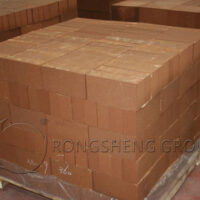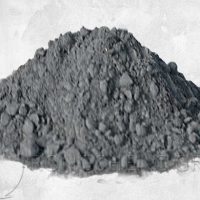Refractories have the following characteristics: ① good volume stability; ② good high temperature strength and wear resistance; ③ good acid resistance; ④ good seismic stability; ⑤ good corrosion resistance (CO, C12, SO2, HCl , Alkali metal vapor, etc.); ⑥ good workability (unshaped); ⑦ good heat and heat insulation.
The basis for the selection of refractory materials: different incinerators have different operating conditions, and different internal use temperatures require different properties of refractory materials. Therefore, refractory materials with different properties should be selected according to their working environment and temperature.
At the input part of the incinerator, the input and drop of the waste must be in contact with the material, and the temperature of the input port often changes, so the refractory material is required to have good wear resistance and thermal shock resistance, and clay bricks can be used; In the drying room and combustion chamber, the waste and the furnace lining are in direct contact at high temperatures. On the one hand, the slag will adhere to the furnace lining, and on the other hand, impurities will also enter the furnace lining. At the same time, the input of waste will inevitably cause temperature changes, so refractory materials are required. Not only is it abrasion-resistant, corrosion-resistant, and difficult to adhere, but also has alkali resistance and oxidation resistance. Generally, clay bricks, high alumina bricks, SiC bricks, castables and plastics are used; in the pipeline and gas cooling parts, due to water spray impurities Human invasion and temperature changes, so the refractory is required to be alkali resistant, water resistant, and thermal shock resistance. There is scouring and impurity intrusion, so the selected furnace lining should be wear-resistant and alkali-resistant. Clay bricks and castables are commonly used; in the rotary kiln part of the rotary kiln-type incinerator, the waste needs to be continuously rotated and the addition of waste causes temperature Therefore, the material is required to be wear-resistant and thermal shock resistance. Generally, clay bricks, high-alumina bricks, SiC bricks or castables are used.
Different incinerators and different parts of use have different operating temperatures: the ceiling, side walls, and burners of the combustion chamber are used at a temperature of 1000-1400C, and high alumina bricks and clay bricks with a refractoriness of 1750-1790*C can be used. , You can also choose plastics with a refractoriness of 1750-1790°C; the upper, middle, and lower parts of the grate side have a temperature of 1000-1200°C, and you can choose silicon carbide bricks or a refractoriness of 1710-1750°C. For clay bricks, wear-resistant castable can also be used; the temperature of the roof and side walls of the secondary combustion chamber is 800-1000°C, and clay bricks with a refractoriness lower than 1750°C or clay 1710-1750°C can be used. For the clay bricks, wear-resistant castables can also be used; the temperature of the top and side walls of the secondary combustion chamber is 800-1000°C, and the refractoriness can be selected clay bricks or clay castables below 1750°C; the room item and side wall of the heat exchange chamber, the room item, side wall, and bottom of the spray chamber, whose service temperature is lower than 600°C, can be selected with a refractoriness lower than Clay bricks or clay castables at 1710°C; different incinerators, different parts of use, and different operating temperatures: the ceiling, side walls, and burners of the combustion chamber have a temperature of 1000-1400C, and the optional refractoriness is High alumina bricks and clay bricks of 1750-1790*C, plastics with a refractoriness of 1750-1790°C can also be used; the upper, middle, and lower parts of the grate side have a temperature of 1000-1200°C, and carbonization can be selected Silica bricks or clay bricks with a refractoriness of 1710-1750°C can also be used as wear-resistant castables; the ceiling and side walls of the secondary combustion chamber have a temperature of 800-1000°C, and the refractoriness can be lower than 1750. °C clay bricks or clay castables; the room item, side wall of the heat exchange chamber, the room item, side wall, and bottom of the spray chamber, the use temperature is lower than 600 °C, and the refractory degree is lower than 1710 °C. Clay bricks or clay castables; adjust the use temperature of flue and flue to 600°C, can choose refractory bricks or clay castables with a refractoriness lower than 1670°C.









